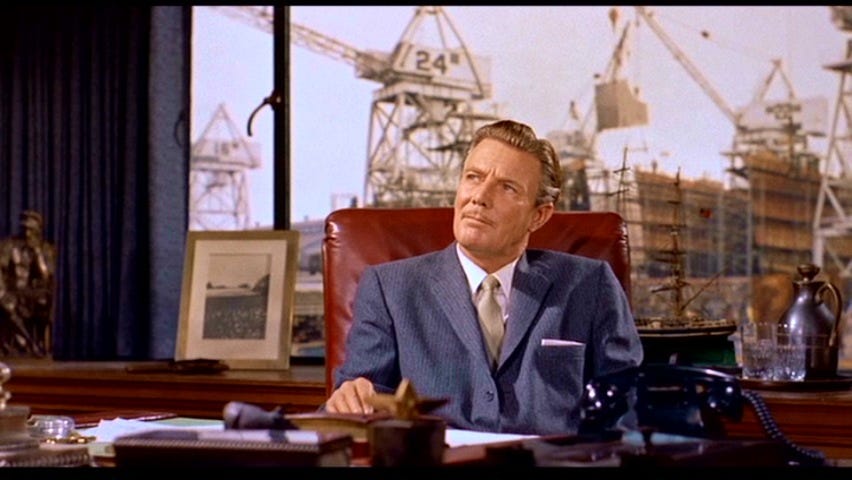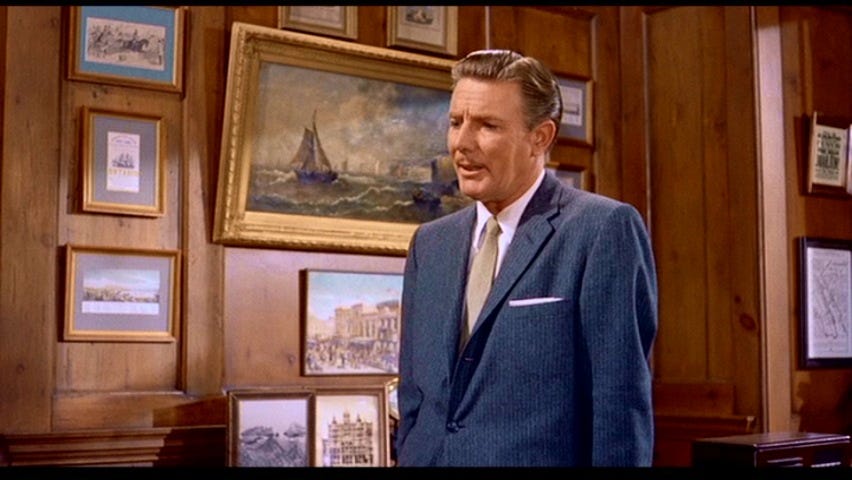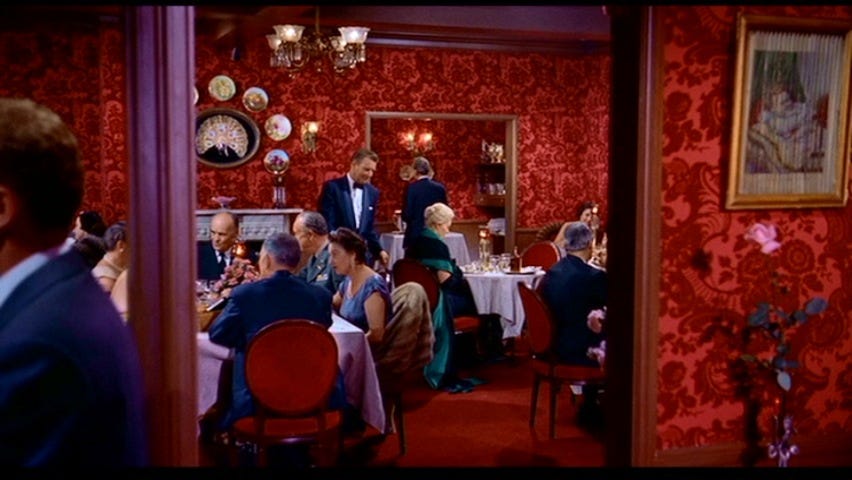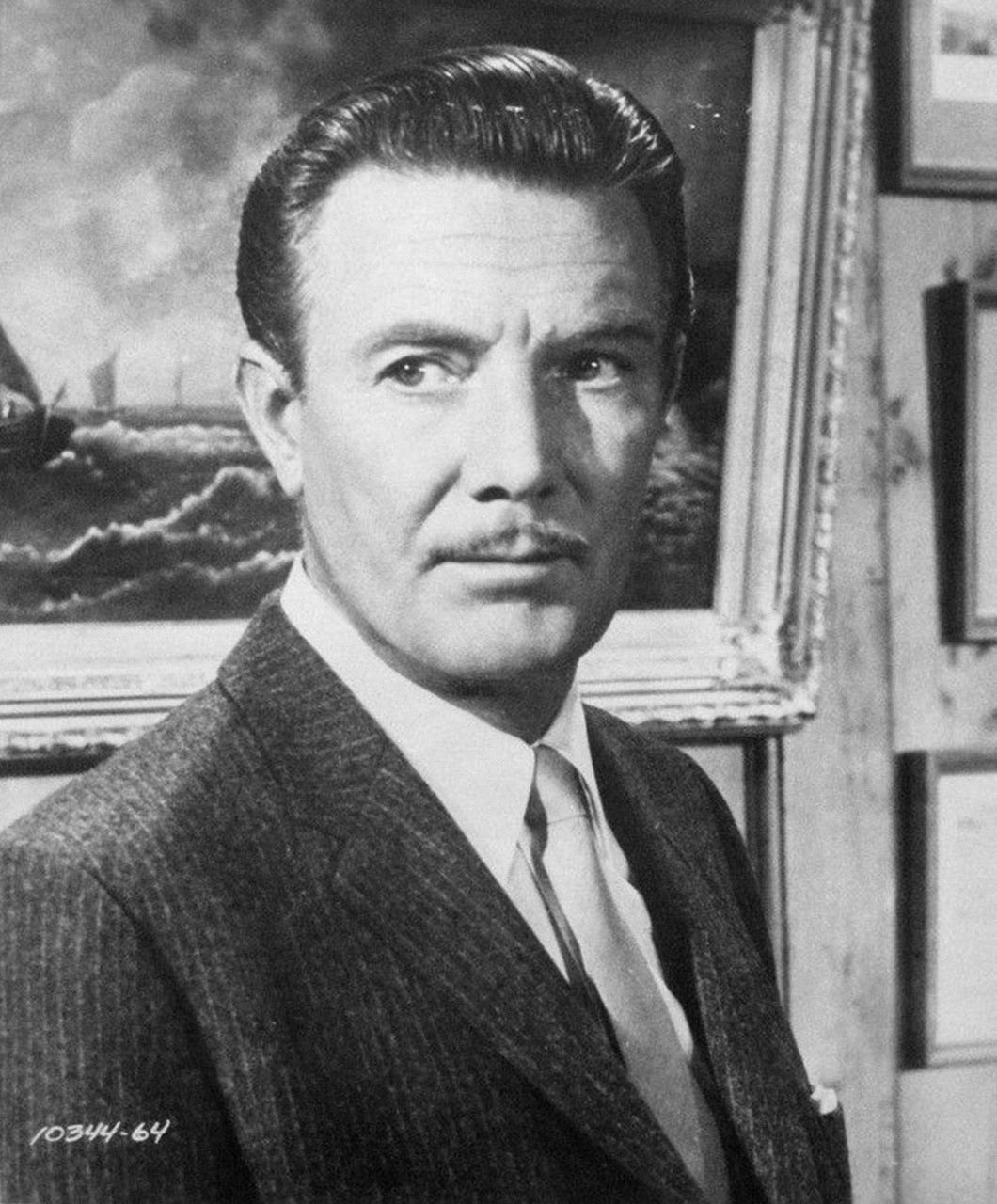Despite his limited screen time, Gavin Elster is the puppet master who sets the entire plot of Hitchcock’s Vertigo in motion and whose actions ripple throughout the narrative. In this blog post I will try to understand the significance of Gavin Elster and how his character is crucial to understanding the deeper themes of "Vertigo".
Gavin Elster, portrayed with understated menace by Tom Helmore, first appears as an old college acquaintance of Scottie. He presents himself as a concerned husband, worried about his wife Madeleine's strange behavior. However, as the film unfolds, we discover that Elster is far from the devoted spouse he claims to be.
Elster's true nature is that of a calculating murderer. He constructs an elaborate scheme to kill his wife and inherit her wealth, using Scottie's acrophobia and romantic nature against him. This plan involves hiring Judy Barton to impersonate his wife Madeleine, knowing that Scottie will fall in love with her. The fake Madeleine's apparent suicide, which Scottie is powerless to prevent due to his vertigo, provides the perfect cover for Elster to murder his real wife.
Elster's scheme is the engine that drives the entire plot of "Vertigo". Without his machinations, there would be no mystery for Scottie to investigate, no doomed romance to pursue. Elster creates the illusion of Madeleine – her haunted demeanor, her supposed possession by Carlotta Valdes – that captivates Scottie and the audience alike.
Moreover, Elster's plan doesn't just set the story in motion; it continues to influence events long after he has disappeared from the screen. The trauma of "Madeleine's" death sends Scottie into a spiral of depression and obsession. When he later encounters Judy and reshapes her into Madeleine's image, he's unknowingly continuing Elster's work of manipulation and identity erasure.
Gavin Elster represents the theme of manipulation that runs throughout "Vertigo". He manipulates Scottie by playing on his old friendship and his chivalrous nature. He manipulates Judy by convincing her to participate in his scheme. Most insidiously, he manipulates reality itself, creating a false narrative that others believe and act upon.
This manipulation extends to the audience as well. For much of the film, we see events through Scottie's eyes, believing in the ghost story that Elster has fabricated. It's only later that we realize how thoroughly we, like Scottie, have been deceived.
One of the most intriguing aspects of Elster's character is his absence for much of the film. After setting his plan in motion, he vanishes from the narrative, leaving Scottie and Judy to play out the tragedy he has orchestrated. This absence makes Elster all the more menacing – he's the unseen puppeteer, pulling strings from afar.
Hitchcock's decision to keep Elster offscreen for most of the film enhances the sense of paranoia and uncertainty that permeates "Vertigo". We're left to wonder about Elster's true motives and the full extent of his plan. This ambiguity adds to the film's psychological complexity and reinforces the theme of the unreliability of perception.
Gavin Elster also serves as a commentary on power and privilege in society. As a wealthy, respected businessman, Elster is able to literally get away with murder. He uses his social standing and financial resources to construct his elaborate scheme, exploiting those beneath him on the social ladder.
Elster's exploitation of Judy is particularly telling. He takes advantage of a young, working-class woman, using her as a pawn in his game. This aspect of Elster's character adds a layer of social critique to "Vertigo", highlighting how the powerful can manipulate and discard the less privileged.
Elster serves as a foil to Scottie in many ways. Where Scottie is emotional and romantic, Elster is cold and calculating. Scottie becomes obsessed with the illusion of Madeleine, while Elster is the creator of that illusion. Scottie is haunted by the past, while Elster efficiently discards it once it has served its purpose.
This contrast highlights the film's exploration of reality versus illusion. Scottie falls in love with a phantom, a creation of Elster's design. Elster, on the other hand, sees through the illusions of society, manipulating them for his own gain.
Some have suggested that Gavin Elster can be seen as a stand-in for Hitchcock himself. Like a director, Elster creates a false reality, casting actors (Judy as Madeleine) and orchestrating events for his desired outcome. This meta-textual reading adds another layer to "Vertigo's" exploration of the nature of fiction and reality.
Moreover, Elster's manipulation of Scottie and Judy mirrors Hitchcock's manipulation of the audience. Just as Elster crafts a narrative for Scottie to believe, Hitchcock constructs a film that plays with our perceptions and expectations.
One of the most disturbing aspects of Elster's role in "Vertigo" is that he essentially gets away with his crime. The film ends without Elster facing any consequences for his actions. This lack of resolution adds to the film's unsettling power, leaving the audience with a sense of unresolved tension.
The fact that Elster escapes justice while Scottie and Judy suffer tragic fates adds to the film's dark, fatalistic tone. It suggests a world where the cunning and powerful can manipulate others with impunity, leaving destruction in their wake.
Elster's character adds layers of complexity to "Vertigo's" narrative. His absence for much of the film creates an atmosphere of uncertainty and paranoia. His escape from justice at the end leaves us with a sense of unresolved tension. And his role as a potential stand-in for Hitchcock himself adds a meta-textual dimension to the film's exploration of fiction and reality.
In the end, Gavin Elster serves as a reminder that in Hitchcock's world, and perhaps in our own, the most dangerous villains are often those who operate in the shadows, manipulating others while keeping their own hands clean. His character is a crucial piece in understanding the intricate puzzle that is "Vertigo".
AI Bio of Tom Helmore
Tom Helmore was a British-born actor with a career spanning several decades in both film and television. Born on January 4, 1904, in London, England, Helmore had a notable connection to the legendary director Alfred Hitchcock that spanned much of his career.
Helmore's film career began in the silent era, with an appearance in Hitchcock's early work "The Ring" (1927). He continued to work with Hitchcock, appearing in "Secret Agent" (1936), showcasing a long-standing professional relationship with the director.
However, Helmore is perhaps best known for his role as Gavin Elster in Hitchcock's classic 1958 thriller "Vertigo," starring James Stewart and Kim Novak. This appearance, coming decades after his earlier Hitchcock films, demonstrated the director's penchant for working with familiar actors throughout his career.
Beyond his work with Hitchcock, Helmore appeared in numerous other films throughout the 1940s and 1950s, often playing sophisticated, urbane characters. Some of his other notable film credits include "The Time of Your Life" (1948), "Les Girls" (1957), and "The Tender Trap" (1955).
In addition to his film work, Helmore also made appearances in various television shows during the 1950s and 1960s. He continued acting until the late 1960s, with his last known role being in the TV series "The Man from U.N.C.L.E." in 1967.
Tom Helmore passed away on September 12, 1995, in Longboat Key, Florida, at the age of 91, leaving behind a legacy that included significant contributions to Hitchcock's filmography from its earliest days to its most celebrated period.






I think I was the first to call Gavin Elster the Puppet Master. Unlike Scottie and Madeline whose masks are peeled off throughout the movie, Gavin's is never shown in his presence. He is a monster who is never publicly revealed but his shadow is cast throughout. He is wealthy and privileged, while Scottie and Judy are working class. They are toys for his pleasure. The fact the real Madeline is never seen is telling. We never see her face. Metaphorically we never see anyone's real face in this movie. It's all personas.
Interesting! Of all of the pieces that have been written about Vertigo I don't think I previously came across one about the character of Elster. He seems so inconsequential on the surface but he definitely represents one of Hitchcock's many well-dressed villains! (I need to go back and re-read your book!)